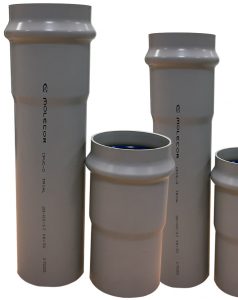 Breaking through the temperature barrier, Molecor has engineered its piping for higher pressure and temperatures while increasing its mechanical and installation properties. Even with temps above 100 degrees Celsius, they retain their dimensional stability for use with water and wastewater.
Breaking through the temperature barrier, Molecor has engineered its piping for higher pressure and temperatures while increasing its mechanical and installation properties. Even with temps above 100 degrees Celsius, they retain their dimensional stability for use with water and wastewater.
“This is not a future dream,” says Ignacio Muñoz, CEO of Molecor. “The development of CPVC-O pipes would be a worldwide revolution exponentially enlarging the possibilities for the market, contributing at the same time with important raw material and energy savings, substantially reducing the carbon footprint.”
The chlorine added to PVC gives CPVC higher temperature performance and improved fire and corrosion resistance. CPVC-O pipes allow a larger diameter even under higher temperature and pressure.
Among the hurdles, Molecor had to adapt its machinery so that it could work at 150°C. “Once this engineering process was achieved, we had to be able to extrude the mixture satisfactorily,” says Ignacio. “The potential advantages would translate into new markets – industrial and hot water applications for large CPVC-O pipes.”
Nominal pressure, usually limited to PN=10 bar, can be increased to as much as PN=16 bar. With the greater strength comes durability – at least 50 years, Ignacio says. And while using fewer resources to produce, they’re also 100% recyclable for the next lifecycle.
